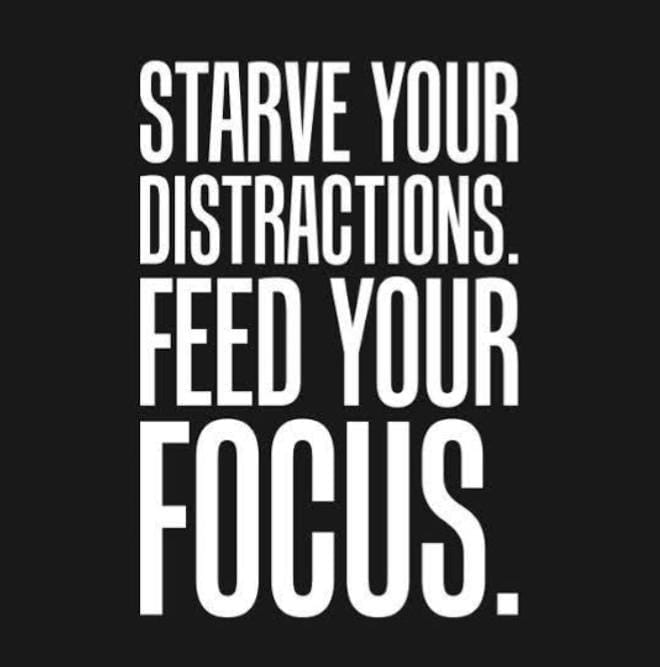30th Sept 2024
Iam sure you have heard & read the below para several times,
“Focus on the positives, focus on the possibilities, focus on your goals, focus on the why & how will become easy.
The size of our problems is nothing As compared to our ability to solve them
BUT
We focus on the problems And underestimate our ability to solve them.
So focus on solutions & the solution will appear.”
The question is, “How to focus on the required thing?”
Most people don’t have trouble with focusing. They have trouble with deciding.
What I mean is that most healthy humans have a brain that is capable of focusing if we get the distractions out of the way.
Have you ever had a task that you absolutely had to get done?
You got it done because the deadline made the decision for you. Maybe you procrastinated beforehand, but once things became urgent and you were forced to make a decision, you took action.
Instead of doing the difficult work of choosing one thing to focus on, we often convince ourselves that multitasking is a better option which is ineffective.
Focus can only occur when we have said yes to one option and no to all other options. In other words, elimination is a prerequisite for focus.
As Tim Ferriss says, “What you don’t do determines what you can do.”
One of my favorite methods for focusing your attention on what matters and eliminating what doesn’t comes from the famous investor Warren Buffett.
Buffett uses a simple 3-step productivity strategy to help his employees determine their priorities and actions.
One day, Buffett asked his personal pilot to go through the 3-step exercise.
STEP 1: Buffett started by asking the pilot, named Mike Flint, to write down his top 25 career goals. So, Flint took some time and wrote them down.
STEP 2: Then, Buffett asked Flint to review his list and circle his top 5 goals. Again, Flint took some time, made his way through the list, and eventually decided on his 5 most important goals.
STEP 3: At this point, Flint had two lists. The 5 items he had circled were List A, and the 20 items he had not circled were List B.
Flint confirmed that he would start working on his top 5 goals right away. And that’s when Buffett asked him about the second list, “And what about the ones you didn’t circle?”
Flint replied, “Well, the top 5 are my primary focus, but the other 20 come in a close second. They are still important so I’ll work on those intermittently as I see fit. They are not as urgent, but I still plan to give them a dedicated effort.”
To which Buffett replied, “No. You’ve got it wrong, Mike. Everything you didn’t circle just became your Avoid-At-All-Cost list. No matter what, these things get no attention from you until you’ve succeeded with your top 5.”
I love Buffett’s method because it forces you to make hard decisions and eliminate things that might be good uses of time, but aren’t great uses of time.
So often the tasks that derail our focus are ones that we can easily rationalize spending time on.
Regardless of what strategy you use, just remember that anytime you find the world distracting you, all you need to do is commit to one thing.
In the beginning, you don’t even have to succeed, You just need to get started, Focus & stay blessed forever.

